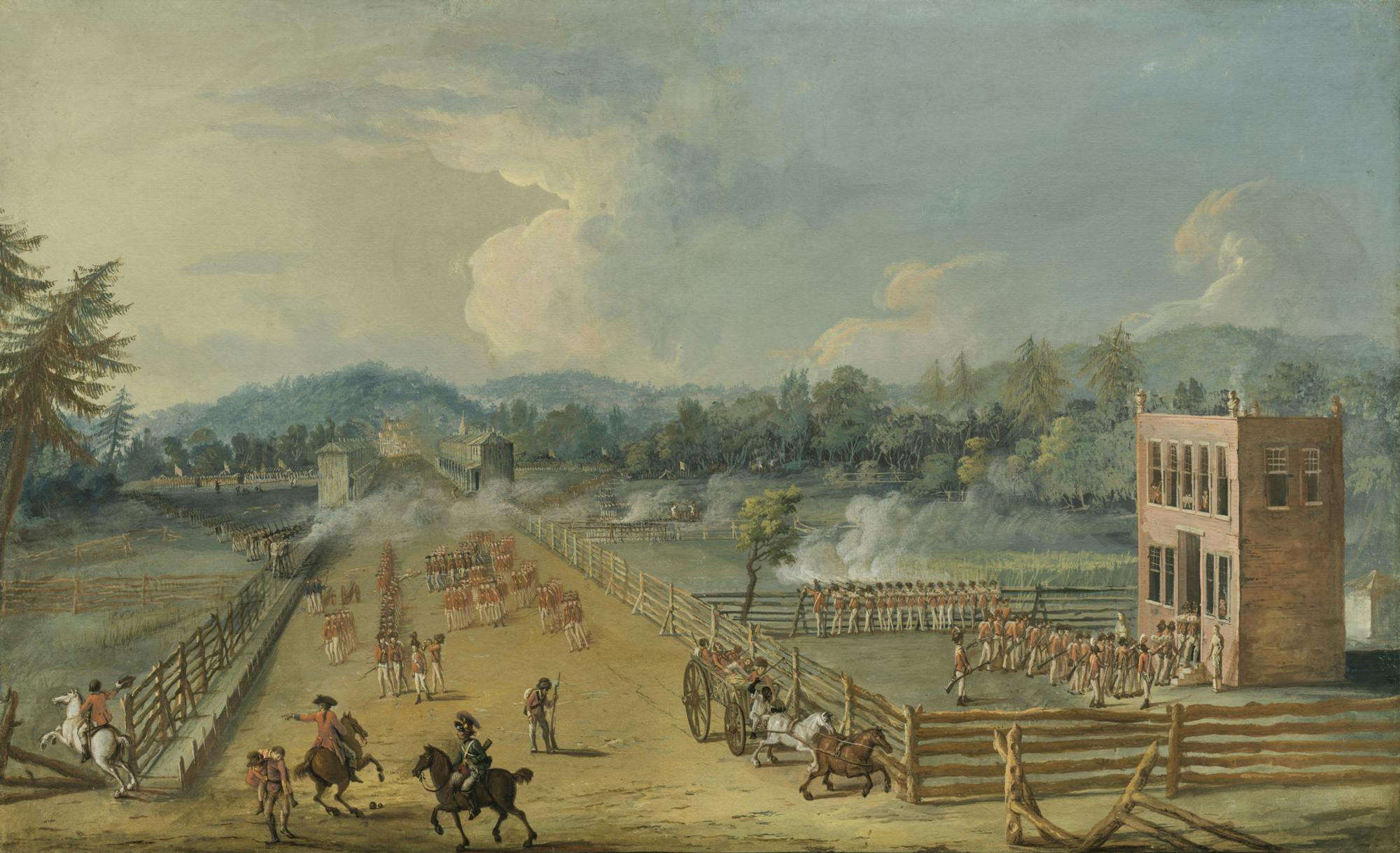Battle of Germantown
Painted by Xavier della Gatta, 1782
Richard Mansergh St. George worked with Italian artist Xavier della Gatta to create the painting of the Battle of Germantown reproduced here. The painting merges different actions into one scene, including the moment Richard Mansergh St. George was carried off the battlefield after he was wounded.
Museum of the American Revolution

